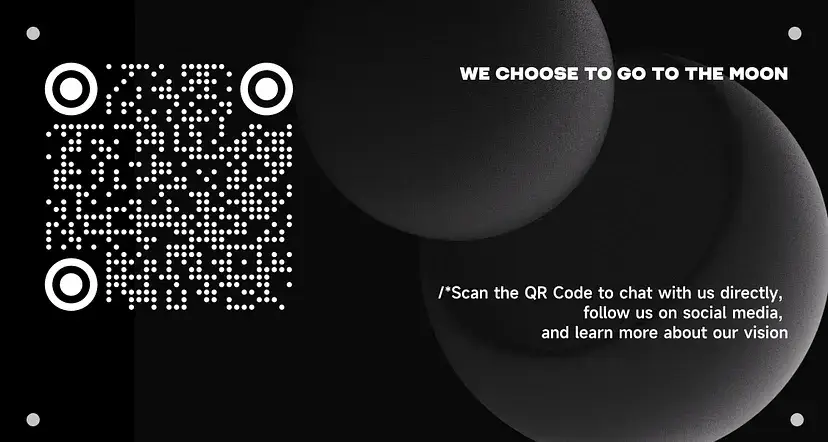Moonshot Mafia #04 | RSS3: Reshaping the Flow of Information
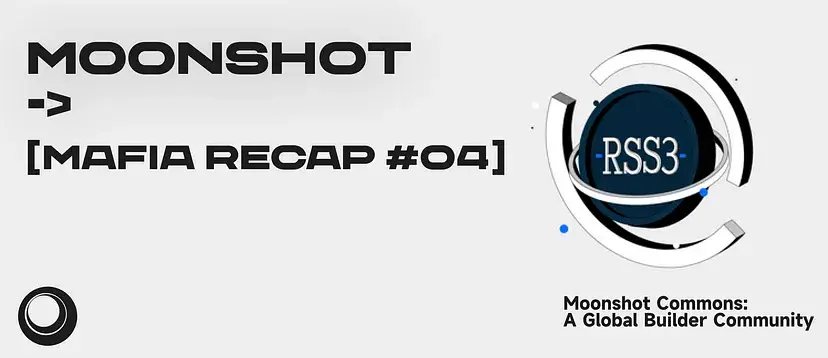
“RSS3 is an open information syndication protocol that aims to support efficient and decentralized information distribution in Web3. Derived from the best out of RSS, RSS3 is an open information syndication protocol that aims to support efficient and decentralized information distribution in Web3. It defines the format of information presence and communication, with this elegantly designed, user-friendly content format, clients can easily access a variety of content sources in a uniform format without the need for extensive compatibility logic.” (Visit RSS3 for more information)
At Moonshot Web3 Mafia #4, we invited Joshua, co-founder of RSS3, to talk about his entrepreneurial experience and insights into the future of Web3.


Can you tell me a bit about your background, and what led you to choose the RSS3 project from the many entrepreneurial opportunities available to you?
My background is fairly common for entrepreneurs. In 2017–18, I dropped out of college and developed an App related to information distribution. It was obvious to me that the algorithmic approach of the information cocoon had its drawbacks, while manual management of subscriptions wasn’t user-friendly and degraded user experience.
Therefore, I started to think — if we treated information flow as a social asset and then arrange secondary distribution, can we create a group-based information distribution method? I tried to do it at that time, but because there were not enough information sources, RSShub was used on a large scale. I also established connections with their developers. RSS itself is an unregulated way of content distribution, and it was difficult to implement our application in China. Yet, through this experience, we discovered that it was not one or two good applications or a more optimized user experience that were limiting the development of the Internet industry as a whole, but rather fundamental and structural protocol issues.

After that, we started to look for entrepreneurial opportunities in the non-application layer that could have a more profound impact — this was the start of RSS3. Toward the end of 2020, the project started to gain more momentum. Momentum for the project began to pick up by the end of 2020. By February of the following year, we had secured the backing of investors such as Hash Global, Mask Network, and Geek Park in our first round of fundraising. We received further support from Crypto-related entities such as Coinbase, Dragonfly, and HashKey in our second round of fundraising in September.
At that node, there were indeed many choices, and many of my ideas surfaced as similar projects. The decision to pursue RSS3 in particular came from my longstanding research and enthusiasm for information distribution. During college, I conducted research on the subject of information distribution and participated in the development of various protocols, which eventually coalesced into a serious entrepreneurial endeavor.
Nevertheless, practical and analytical considerations also played a role in our decision-making process. When we saw an opportunity to create a new generation of protocols and standards for information distribution, coupled with strong support from the community, capital, and our team, it was a natural choice to go all in.

Based on your analysis and observations, which direction do you believe offers the most entrepreneurial opportunities in the Web3 ecosystem today?
I am not yet a full-fledged Defi entrepreneur. I will talk about the social and content aspects. I think the future of DeFi lies in three areas: the first is the application of social-related scenarios; the second is some technology infrastructure in less developed areas; and the third is “X to Earn”.
1. Social Application
There are still many opportunities to utilize Web3 to create social or content-based applications. For instance, the wallet is public information, so it can be used as a fair database to identify user interests. Token-gated groups are natural extensions of this.
So I think the first direction is to use Web3 native or wallet-native information to implement changes in the social experience. Of course, it’s not purely messaging. You can work on Web3 messaging as social media content, or you can make an application purely for Web3 messaging. For example, not long ago, Context.app reported that they have raised $20 million. But its service is actually very simple — all the back-ends have been prepared by RSS3, it only needed a UI.
If we think of the blockchain as a database, we can see that it has a lot of content beyond financial transactions. This includes things like Arweave, which allows for the storage of documents in the more traditional sense or a ticket to an event. As this type of content becomes more and more available on the chain, it makes sense as a technical layer for social media. So I think the first type of opportunity is in using on-chain or public database data as a basis for social or content-oriented applications.
At the same time, these kinds of social applications also face a huge challenge. Nowadays, people don’t have a shortage of social channels. There are many ways to meet user needs in traditional services such as WeChat and LinkedIn. If we simply make a WeChat or Discord with a wallet login, it will not work. It does not have a unique purpose of usage to attract users. If you can’t achieve enough differentiation to make users think this is a service that traditional businesses can’t provide, doing this kind of service will actually be a pseudo-proposition.

2. Services for Less Developed Areas
The second opportunity I think is to go for basic services in some less developed areas, regardless if it is financial, social, or content-based. In many cases, a new service needs to provide multiple values to the user before it can beat the original service model. Compared to countries with very mature services like the United States, less developed regions do not have the baggage of the past and will only consider how good or bad the program is. If there is already a complete system in place, it is very difficult to convince them to switch to a Web3 solution. No matter what the business is, there is a certain network effect in place. This network effect exists within the community, if not within the product logic. Therefore, it is much easier for a brand-new concept to develop in a new place.
The Worldcoin project, for example, is very controversial and not necessarily successful, but it is very representative. They go out and collect retinas and give everyone tokens based on the hash they get from the retinas. Many people in Africa are willing to contribute their data to get tokens because, for them, there is no cost for this. Getting this money will allow them to purchase a lot of things with local currency, and all of a sudden they become cryptocurrency users directly. This is also the case with the success of Axie Infinity in the Philippines. Their levels of English usage and higher education are not low and have lots of talent with international vision, yet the local economy is still dominated by the service industry in tourism. So when they were looking for a new outlet, Axie Infinity’s booming in the region was based on such a big-time and talent background.
So I think it’s particularly effective to do business in a region where the financial system or data system is not mature. We say that China’s electronic payment belonged to the mobile market from the beginning; many services in Africa likely belonged to the Web3 world from the beginning.

3. “X to Earn”
The third direction, I think, is related to the concept of “X to Earn”. Usually, the development of Web3 is divided into two parts. One is more “originalist”, more concerned with decentralization; the other is more concerned with assetization, which includes many “X to Earn” projects.
For example, Axie Infinity is not a very decentralized service — its game is centralized, and its chain is not even open-source, but this does not affect its assetization. STEPN is the same, they are even intentionally trying to weaken the concept, it allows you to pay directly by credit card for many things. These types of projects are more for the average person, and the average user is positively motivated by the asset-based or more convenient experience.
I personally don’t think it’s Web3 in the original sense. It’s more about helping people assetize their data. For this kind of project, Blockchain technology is more like a tool to actualize the existing business logic, but it is still a direction.
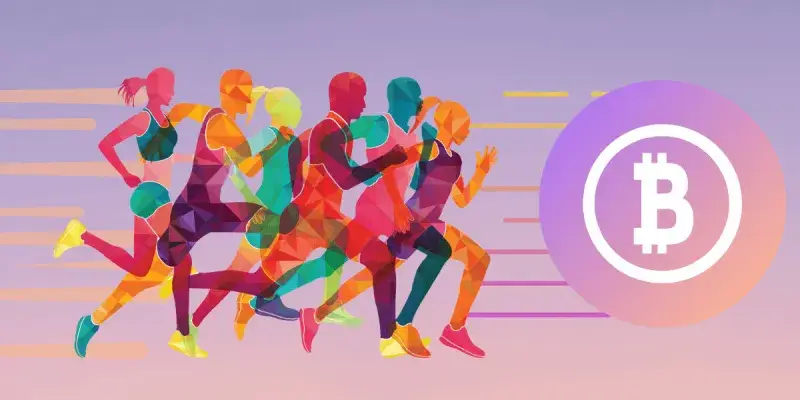

What value has RSS3 realized now? What are your plans for the future?
There are many parts to the RSS3 project. First and foremost, it is a standard for information solutions to foster communication between applications. But on top of that, the focus of the project lies in the assetization of social and content data.
We will help users assetize so that the data is secured and easily convertible between any applications. We aim to cover the aspects of the process that are not well served, from information creation to storage to distribution and users. For instance, assetization often involves a creation step; if the data needs to be asset-based, then the creation should be approached in this manner. Similarly, since the protocol is used for data distribution, the corresponding clients should implement the same logic.
To sum up, we will remain committed to information content distribution and helping more applications explore multiple scenarios downstream. From the upstream point of view, data assetization is still imperfect, so for the industry, it is our goal to increase assetization penetration through certain techniques.
In terms of the current coverage of virtual currencies as assets, of about 300 million people worldwide, 90% of assets are on centralized exchanges, with only about 1 in 10, or 35 million, users having wallets. The number of those who actively trade and use crypto as a system of accounts is even smaller, standing at 300,000 to 500,000. This figure requires a substantial surge. To achieve this, we must strive for improvement in all aspects, from the application layer to the assetization layer. Even though there is a good infrastructure for information distribution, the total number of information that can be distributed is still too small.
In addition, the RSS3 service itself will be gradually decentralized. In the beginning, all nodes belonged to us. As the network progresses, ownership of the nodes will belong to the participants of the network.
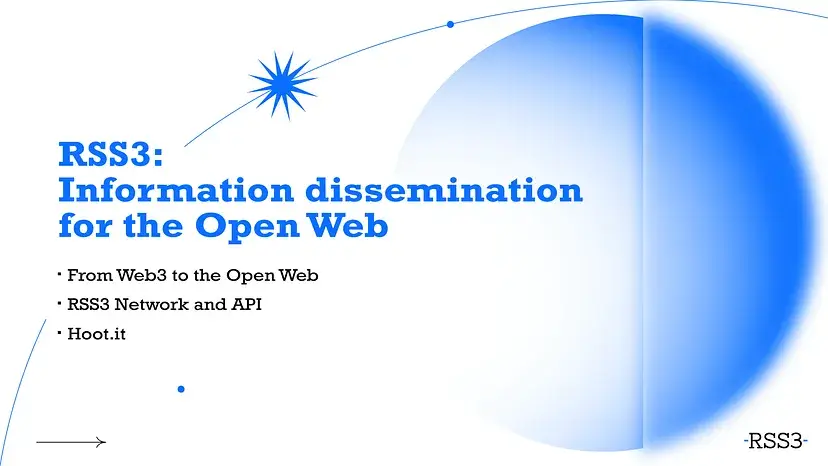
What types of ecosystems and partnerships are essential for RSS3 to reach its goal?
First, assetizing and making information interoperable leads to new applications. We offer technical support and assistance with fundraising and grant applications for this type of project. If you have a good understanding of our ecological scenario, whether you are doing NFT tracking or push notifications, we would be very happy to see it.
In addition, we are interested in exploring upstream storage and assetization of information. If you have a good way to assetize content or data, we are willing to provide you with the necessary support so that more applications can leverage your assetized data, enabling people to create more assets on the chain.
Of course, there is also our own exploration here, because assetization is rather an interesting topic. If you are looking to fully assetize something, it still needs to end up on a chain. This requires you to have a clear understanding of assetization and be able to visualize it as an asset or a class of assets. If it is simply decentralized, the user will most likely not have a sense of ownership because the act itself is hard to perceive; but if it is asset-based perception, it is particularly easy.

What is the relationship between RSS3 and types of social infrastructure like CyberConnect?
RSS3 as a protocol means that as long as CyberConnect outputs a social graph in RSS3 format, it is still a project in the RSS3 system. Of course, while this is the standard, many projects are given the freedom to choose whether or not to follow it.
In terms of assetization itself, CyberConnect is helping users to assetize their data through Ceramic. So much so that an application can choose to allow users to follow 150 people through CyberConnect to see what they are up to and pass those 150 addresses on to RSS3’s relevance services, leading to a stream of information based on CyberConnect’s relationship chain.
As it stands, I think that the field requires more time to evolve. As mentioned before, the application development side is not fast enough for now and requires greater attention to create innovative products. In fact, the two are rather misaligned.
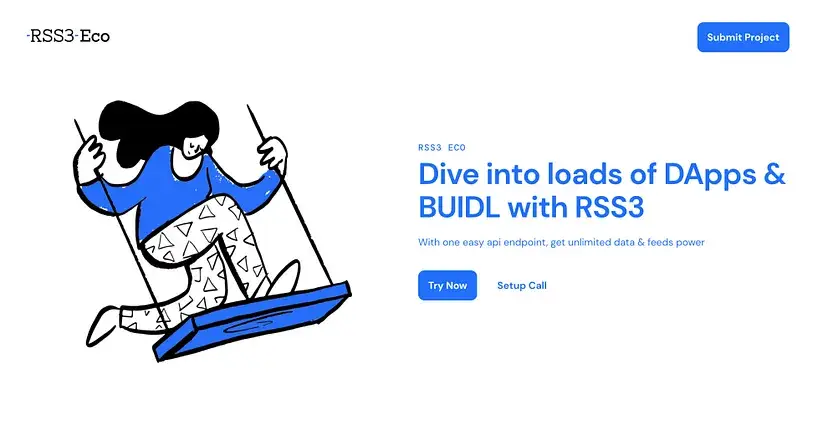

I understand that the RSS3 team is completely open-source, distributed, and collaborative. What kind of people do you think would work well in your team? What makes working for RSS3 different from working in a large corporate setting?
I believe that the suitability of a given position for both large and small companies is largely inconsequential. What really matters is whether you are passionate about the task at hand. If you are passionate about the project, you will be highly motivated to do your best, regardless of the specifics of the job. If everyone is like that, the whole team will not be in bad shape.
Thanks to our open-source culture and regional beliefs, our team is especially welcoming of this type of employee. However, this doesn’t mean that others can’t join us — the most important thing is having a general concept of what we do, being enthusiastic, and developing some faith over time.
It is also important for employees to work on the project with a builder mentality, not a business mentality. Although developers coming from Web2 usually have a very different experience at the beginning and may encounter difficulties in the process of adaptation. But in practical terms, it doesn’t matter, rather they will be better suited for the role than some of the long-term players in the crypto or Defi space.
Because there is a big difference between financial involvement and actual business or R&D involvement, you still need to be serious about your work with a mindset that says, “focus on doing well in the present, not worrying about the future”. But if you have particularly strong token-related needs early on, chances are you won’t fit in here because the whole Web3 space is just getting started. As part of the team, your focus should be on the actual building of the project, and not getting sidetracked by the long-term implications and rewards.

